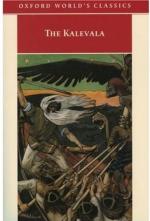|
This section contains 522 words (approx. 2 pages at 400 words per page) |

|
Kalevala Period (c. 500 B.C.-c. 1200 C.E.): The Finns lived in a largely classless society organized by tribe. Tribes (like the Kaleva and Pohjola tabes depicted in the epic) consisted of people united by geography, culture, kinship bonds, and often a patronymic ancestor. There was frequent contact among tribes.
1800s: In LQnnrot's day, Finland was ruled by a foreign power: the Swedes. Finnish society was split into two groups: an urban, educated class of people who spoke Swedish as their first language, and the rural majority, who still spoke Finnish.
Late twentieth century: Finland is a modern, independent, industrialized European nation, whose population is united by a common language and culture. Its government is socialist.
Kalevala Period: Independent tribes occasionally waged war on neighboring tribes, using sword and crossbow.
1800-1918: The Napoleonic wars made Finland a pawn in the conflict between Russia and...
|
This section contains 522 words (approx. 2 pages at 400 words per page) |

|




